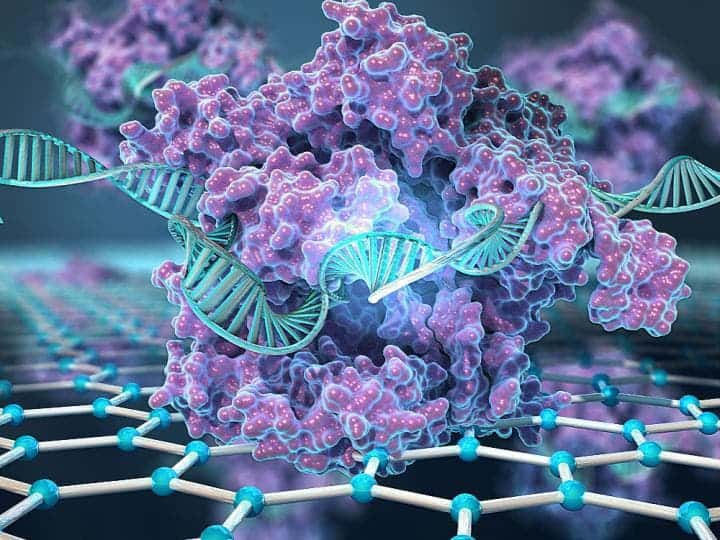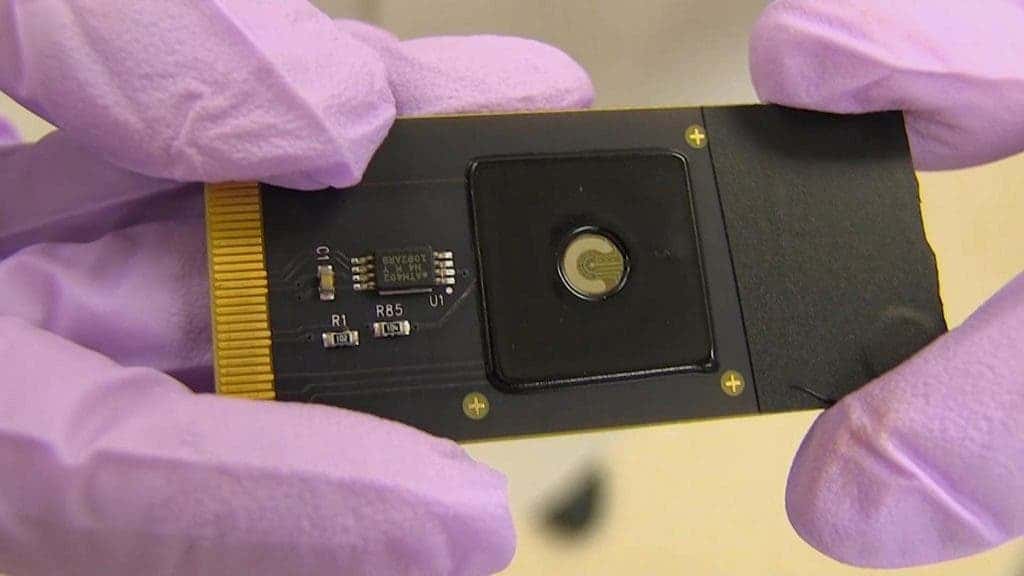Two of the most promising novel techniques have been used together with remarkable results. US researchers have combined CRISPR with electronic transistors made from graphene to create a new hand-held device that can detect specific genetic mutations in a matter of minutes.
“We have developed the first transistor that uses CRISPR to search your genome for potential mutations,” said Kiana Aran, an assistant professor at KGI who conceived of the technology while a postdoctoral scholar in UC Berkeley bioengineering professor Irina Conboy’s lab. “You just put your purified DNA sample on the chip, allow CRISPR to do the search and the graphene transistor reports the result of this search in minutes.”

Genetic scissors
Genetic analysis has developed tremendously in recent years. Not only has it become a relatively common scientific and medical practice, but commercial companies are even offering genetic tests readily available to customers. Over 20 million have already reportedly taken at-home genetic tests.
When these tests are looking for genetic mutations, they “amplify” the DNA segment of interest millions of times to have a better look at it. This process (called polymerase chain reaction or PCR) is time and equipment-intensive, which means that samples have to be sent to a lab and subjected to analysis by expensive and delicate equipment. This is where CRISPR and graphene enter the scene.
The CRISPR-Cas9 system brought in an unprecedented precision, allowing researchers to snip threads of DNA at very precise locations — something often called “genetic scissors.”
“CRISPR-Chip has the benefit that it is really point of care, it is one of the few things where you could really do it at the bedside if you had a good DNA sample,” said Niren Murthy, professor of bioengineering at UC Berkeley and co-author of the paper. “Ultimately, you just need to take a person’s cells, extract the DNA and mix it with the CRISPR-Chip and you will be able to tell if a certain DNA sequence is there or not. That could potentially lead to a true bedside assay for DNA.”
But in order for it to work its magic, the Cas9 protein needs to first locate the spots it needs to cut. Graphene, a single atomic layer of carbon, is extremely electrically sensitive and small enough for this type of application. Researchers attached a deactivated Cas9 protein (one which finds the targeted DNA segment, but doesn’t cut it) and tethered it to transistors made of graphene. When the protein finds the spot, it binds to it and triggers a change in the electrical conductance of the graphene. In turn, this changes the characteristics of the transistors, and this change can be detected with a hand-held device. Ultimately, this allows the detection of genetic mutations within minutes, using relatively simple equipment, in less than an hour.
“Graphene’s super-sensitivity enabled us to detect the DNA searching activities of CRISPR,” Aran said. “CRISPR brought the selectivity, graphene transistors brought the sensitivity and, together, we were able to do this PCR-free or amplification-free detection.”

To demonstrate the equipment’s potential, researchers analyzed blood samples from patients suffering from Duchenne muscular dystrophy (DMD). DMD is a genetic disorder characterized by progressive muscle degeneration and weakness — one of nine known types of muscular dystrophy. Diseases such as DMD are thought to be caused by mutations throughout the dystrophin gene — but this is one of the longest in the human genome and spotting mutations can be costly and time-consuming using PCR-based genetic testing. This is where the novel CRISPR/graphene technology can make a huge difference.
“As a practice right now, boys who have DMD are typically not screened until we know that something is wrong, and then they undergo a genetic confirmation,” said Conboy, who is also working on CRISPR-based treatments for DMD.
“With a digital device, you could design guide RNAs throughout the whole dystrophin gene, and then you could just screen the entire sequence of the gene in a matter of hours. You could screen parents, or even newborns, for the presence or absence of dystrophin mutations — and then, if the mutation is found, therapy could be started early, before the disease has actually developed.”
Researchers also say that things can be scaled up to the point where a handheld device would scan for multiple genetic disorders at the same time. Rapid genetic testing could also be used to help doctors develop individualized treatment plans for their patients, Murthy said. For example, genetic variations make some people unresponsive to expensive blood thinners, like Plavix.
Rapid genetic testing could also be used to help doctors develop individualized treatment plans for their patients, Murthy said. For example, genetic variations make some people unresponsive to expensive blood thinners, like Plavix.
“If you have certain mutations or certain DNA sequences, that will very accurately predict how you will respond to certain drugs,” Murthy concludes.
The study has been published in nature biomedical engineering


